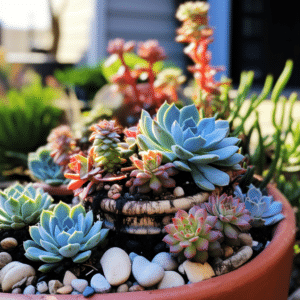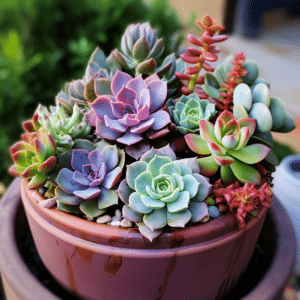Propagating succulents is a rewarding and cost-effective way to expand your collection of these fascinating, drought-tolerant plants. Whether you’re a seasoned gardener or a beginner, the process is relatively straightforward and requires minimal equipment. This guide will walk you through the steps to successfully propagate your succulents.
Understanding Succulent Propagation

Before we delve into the how-to, it’s essential to understand what propagation is. Propagation is the process of growing new plants from different parts of an existing one. In the case of succulents, this can be done using leaves, stem cuttings, or offsets.
Each method has its own set of advantages and challenges. Leaf propagation, for example, is the simplest and most common method, but it can take a bit longer than other methods. Stem cuttings, on the other hand, can produce a new plant more quickly, but it requires a healthy, mature plant. Finally, using offsets or “pups” is a natural way to propagate some types of succulents, but not all succulents produce offsets.
Why Propagate Succulents?
Propagating succulents offers several benefits. Firstly, it’s an economical way to increase your collection without having to buy new plants. Secondly, it’s a sustainable method of gardening, as it reduces the demand for wild-harvested plants. Lastly, it’s a fun and rewarding process that can be a great way to engage with nature and learn more about plant life cycles.
Now that we have a basic understanding of succulent propagation and its benefits let’s explore the different methods in detail.
Leaf Propagation

Leaf propagation is the most common method used for propagating succulents. It involves removing a leaf from the parent plant and allowing it to grow its own roots and eventually a new plant.
It’s important to note that not all succulents can be propagated this way. Some, like Echeveria and Graptopetalum, are perfect for leaf propagation, while others, like Aloe and Haworthia, are better suited for other methods.
Steps for Leaf Propagation
- Choose a healthy leaf from the parent plant. It should be full and plump, not dehydrated or damaged.
- Gently twist the leaf off the stem, ensuring that it comes away cleanly and includes a bit of the stem tissue.
- Place the leaf in a dry, shaded area for a few days to allow the end to callous over.
- Once the leaf has calloused, place it on top of well-draining succulent soil. Do not bury it.
- Mist the leaf and soil lightly every few days. The leaf will start to grow roots and a new rosette.
- Once the new plant has grown significantly, it can be planted in its own pot.
Stem Cutting Propagation
Stem cutting propagation is another popular method for propagating succulents. It involves cutting a piece of the stem from the parent plant and allowing it to grow its own roots.
This method is particularly useful for succulents that have become leggy or stretched out. It’s also the best method for succulents that don’t have leaves that can be easily removed, like Aloe and Haworthia.
Steps for Stem Cutting Propagation
- Select a healthy stem from the parent plant. It should be free of pests and diseases.
- Using a clean, sharp knife or pair of scissors, cut the stem, making sure to leave several inches of stem below the rosette or leaves.
- Allow the cut end to dry and callous over for a few days.
- Once the cut end has calloused, plant the stem cutting in well-draining succulent soil.
- Water the soil lightly every few days. The stem cutting will start to grow roots and can eventually be treated as a mature plant.
Propagation Using Offsets

Some succulents, like Sempervivum and Echeveria, naturally produce offsets or “pups” that can be used for propagation. These offsets are miniature replicas of the parent plant that grow at the base of the stem.
Propagation using offsets is one of the easiest methods, as the offsets are already well-developed and have their own root system. However, not all succulents produce offsets.
Steps for Propagation Using Offsets
- Identify a mature offset that has grown to a substantial size and has started to develop its own roots.
- Gently separate the offset from the parent plant, either by pulling it away or cutting it with a clean, sharp tool.
- Allow the offset to dry and callous over for a few days.
- Once the offset has calloused, plant it in well-draining succulent soil.
- Water the soil lightly every few days. The offset will continue to grow and can be treated as a mature plant.
Conclusion
Propagating succulents is a rewarding and enjoyable process. With patience and care, you can expand your succulent collection and gain a deeper understanding of these fascinating plants. Remember, the key to successful propagation is choosing healthy plant material, providing the right conditions, and being patient. Happy propagating!



